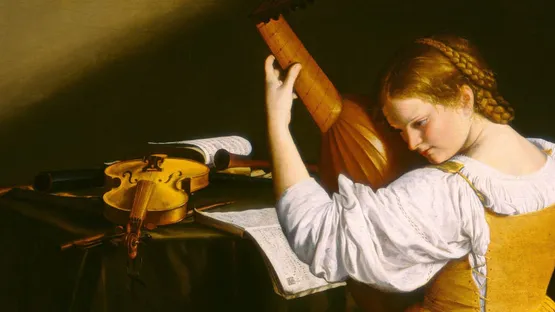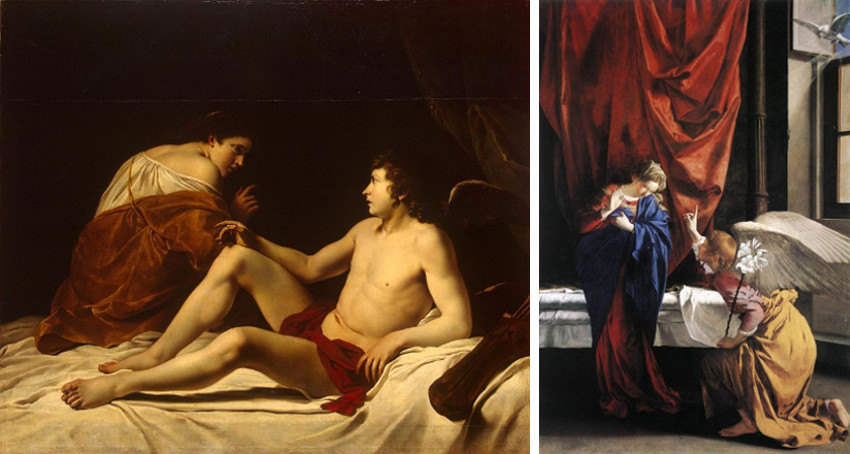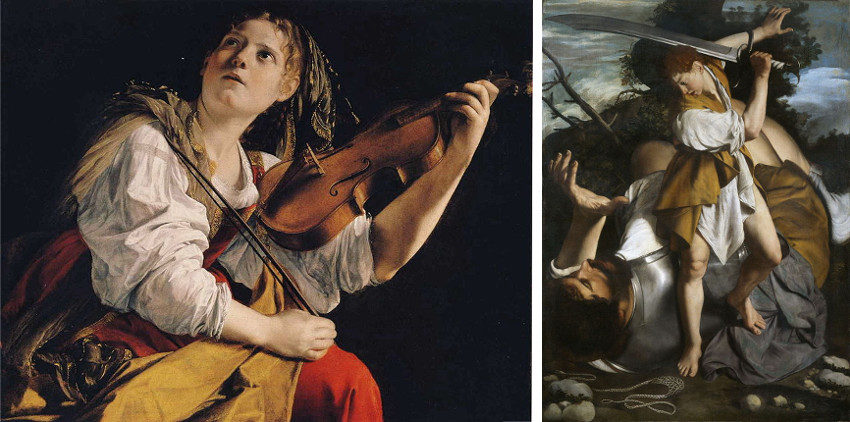
Orazio Gentileschi / Orazio Lomi
Once known for a style that was predicated on compromise and accommodation, Orazio Gentileschi went through a significant change and became one of the best-known Italian painters of the 17th century. This change was inspired by no other than the great Caravaggio. Prior to the style-altering encounter, Gentileschi’s figures were types, his compositions conventional; his color was slack. There is a blandness, an anonymity; and a disturbing lack of conviction to his work of the 1590s that comes as a shock to those who know only his distinctive, post-Caravaggesque pictures.[1]

Personal Life
Orazio’s original name was Lomi and he was born in Pisa in 1562 to a Florentine goldsmith Giovanni Battista Lomi. After moving to Rome in either 1576 or 1578, he took the name Gentileschi from his uncle he was living with. His first steps in the world of art were made alongside his brother, Aurelio Lomi, with whom he also studied together. The dominant majority of Gentileschi’s early works were collaborative since he worked with Agostino Tassi, who painted landscapes, while Gentileschi worked on figures. After being invited by Giovanni Antonio Sauli (who had already commissioned works from Aurelio), Orazio moved to Genoa in 1621. Gentileschi's works for Sauli included a Magdalene, a Danäe and Lot and his Daughters. He found other patrons in the city, including Marcantonio Doria, for whom he carried out an elaborate scheme of frescoes of Old Testament subjects in a "casino" (since destroyed) in the grounds of his palace at Sampierdarena. In 1624, the artist moved to Paris, where Marie de Medici (known for her extensive artistic patronage) reigned. However, despite staying there for two years, only one Gentileschi painting has been successfully identified - an allegorical figure of Public Felicity, painted for the Palais du Luxembourg, currently residing at the Louvre. In 1626, accompanied by his three sons, Orazio moved to England, where he became part of the household of the King's first minister, George Villiers, 1st Duke of Buckingham. The painter had built himself a reputation, and most of the commissions came from the royal family and Queen Henrietta Maria, who considered Gentileschi as her favorite artist. He died in England in 1639.
The early projects of Orazio Gentileschi, being collaborative in nature, required some sort of interaction with other artists

Orazio Gentileschi – Style and Evolution
As mentioned above, Gentileschi’s style was once predicated on compromise and accommodation. And suddenly, in 1600, he became acquainted with the work of Caravaggio. Greatly inspired by several years younger master, Orazio drastically changed his approach to painting, evolved and developed a style he has been known for more than four centuries. However, his commitment to Caravaggio’s revolutionary style was of a different order compared to some of his contemporaries. A slow and methodical worker, he managed to go through the painful transformation and was able to reach far greater modernity than those of either Borgianni or Saraceni. Caravaggism was for him the means by which he made painting a vehicle of personal expression. And that’s why he, after Caravaggio’s escape from Rome, developed a more personal Tuscan lyricism, characterized by lighter colors and precision in detail, somewhat reminiscent of his Mannerist earlier paintings. In 1611, Gentileschi collaborated with Tassi again, and a year later, he was called to the Tribunal of Rome, where his daughter Artemisia Gentileschi had accused Tassi of raping her. Thanks to the testimony given at the trial in 1612-13, it is possible to sketch an image of what Orazio's studio was like in these crucial years of his artistic development. Some intriguing details regarding his studio work were preserved in the trial records. They reveal that Gentileschi, inspired by Caravaggio, painter directly from models. He also made studies from life for later use - he seems to have based the head of Abraham in the Sacrifice of Isaac, painted in the early 1620s, on studies of Molli's head made more than ten years before.
His tools remained the same, but his style evolved

Gentileschi’s Formal Imagination
The painter’s use of tracings was both economical and creative, and it is certainly wrong to brand the composition as inferior just because it was often generated mechanically. Workshop intervention is best deduced from the picture's surface treatment, rather than from the sometimes ambivalent evidence of the X-rays and tracings. Arguably, Gentileschi’s most significant trait revealed by the tracing is his attachment to particular formal designs. Simply said, similar poses were used for different figures. Speaking of imagination, Gentileschi’s was a formal one – and, like Piero della Francesca almost two centuries earlier, he did not hesitate to re-use a pose or a figure, even at the risk of appearing to repeat himself. It is relatively safe to assume that tracings served as an aid to his daughter, Artemisia, as she learned her craft, and they became a staple in her own repetitions.
Orazio Gentileschi lived and worked in Rome, Genoa, Paris, and London.
References:
- Christiansen K., Mann J. W., Orazio and Artemisia Gentileschi, The Metropolitan Museum of Art, New York; Yale University Press, New Haven and London, 2001, p. 2
Featured image: Orazio Gentileschi - The Lute Player (detail)
All images via wikipedia.org
Can We Help?
Have a question or a technical issue? Want to learn more about our services to art dealers? Let us know and you'll hear from us within the next 24 hours.
